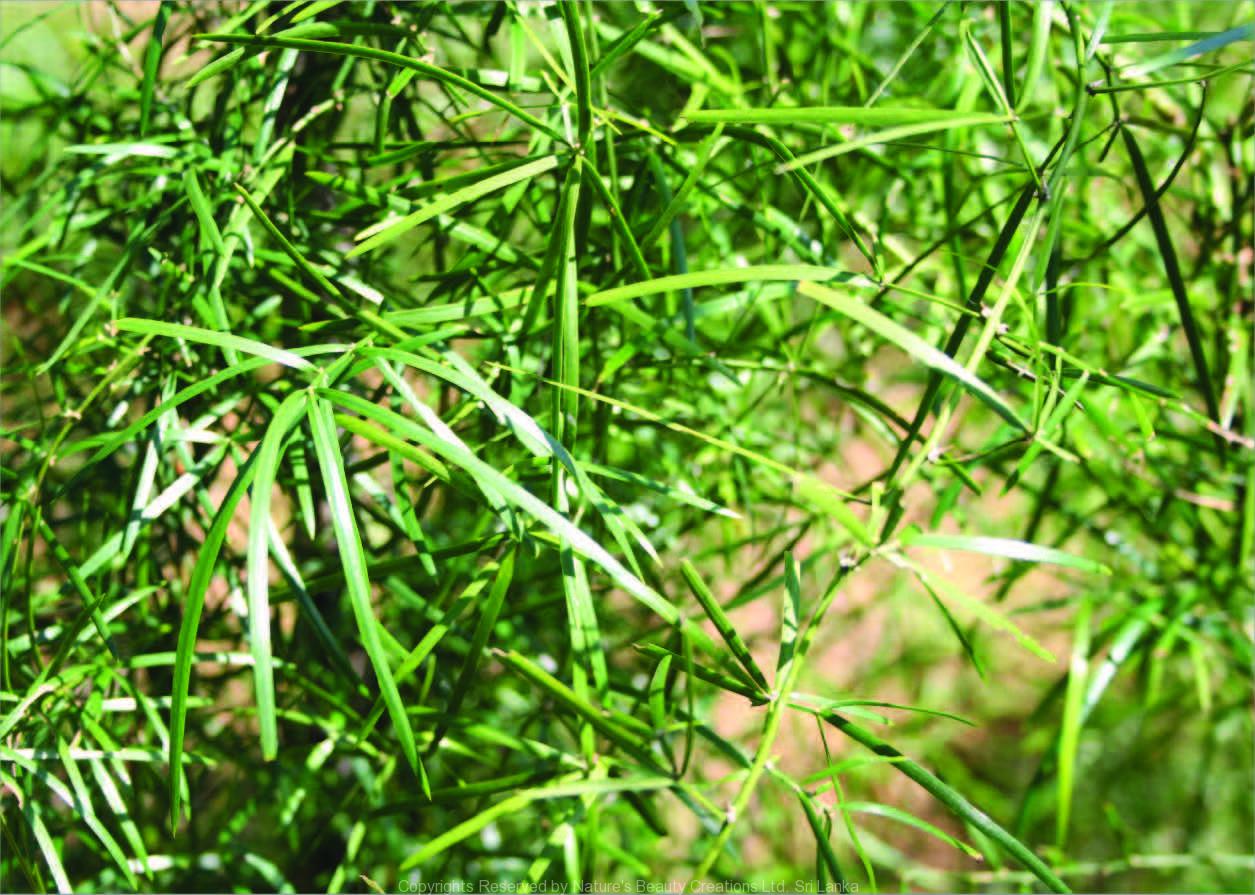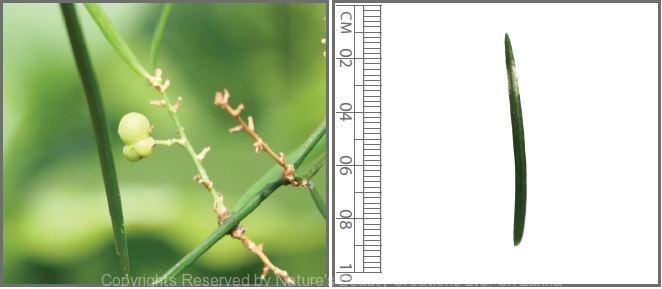

Traditional Knowledge
Useful plant parts :
Cladode and tuber
Uses in traditional medicine :
- Crushed juice of cladodes acts as a cholagogue
- Tuber powder is used in chronic congestion of liver, jaundice and gallstones
- Small doses of tubers are taken for strangury
- External application of medicated oil prepared with tuber is used for rheumatism
- Herbal soup made of fresh cladodes is used as a restorative in wasting diseases
- Soup made of tubers and cladodes is used for chronic nephritis
Scientific Research
Chemical constituents:
Carotenoid: capsanthins, capsorubins violaxanthins and capsoneoxanthins from ripe fruits; caryophyllene type sesquiterpene lactone: aspfalcolide from leaves
Bioactivity :
Plant extract: inhibits the progression of hepatic injury induced by acetaminophen; aspfalcolide: inhibitory effect on the proliferation, migration and tube formation of human umbilical vein endothelial cells
Clinical:
Note :
Cladodes are used to prepare an edible porridge
References : Deli, J. et al., (2000), Capsoneoxanthin, a new carotenoid isolated from the fruits of Asparagus falcatus, Tetrahedron Letters, 41(42), 8153-8155. Ghalib, R. M. et al., (2012), A novel caryophyllene type sesquiterpene lactone from Asparagus falcatus (Linn.); Structure elucidation and anti-angiogenic activity on HUVECs, Europeam Journal of Medicinal Chemistry, 47, 601-607. Hewawasam, R. P. et al., (2008), Effect of Asparagus falcatus on Acetaminophen Toxicity in Mice: A Comparison of Antioxidative Effect With N-Acetyl Cysteine, Journal of Dietary Supplements, 5(1), 1-19. Molnár, P. et al., (2001), (9Z)-Capsanthin-5,6-epoxide, a New Carotenoid from the Fruits of Asparagus falcatus, Journal of Natural Products, 64(9), 1254-1255.
Copyrights Reserved By
Natures Beauty Creations




